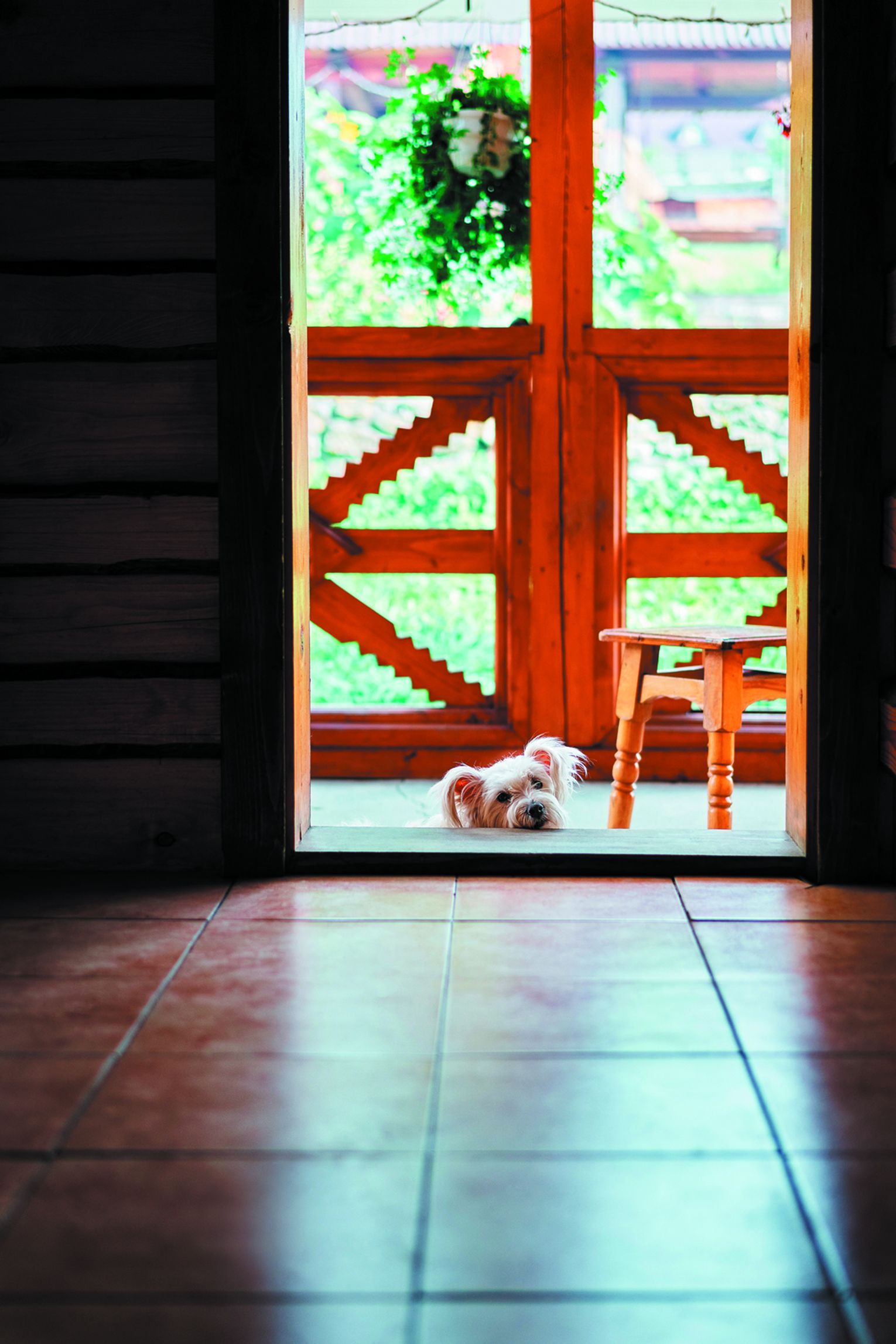Imagine your furry best friend, tail wagging with excitement, ready for a playful afternoon indoors. But instead of bounding across the room, they take a wobbly step, their paws slide out from under them, and their confidence is shaken. The once-familiar living room floor, now gleaming with hardwood, has become a slipping hazard. This is the story of many dog owners who find their canine companions struggling to navigate the slick surface of hardwood floors.

Image: www.tuftsyourdog.com
For dogs accustomed to carpeted floors, the transition to hardwood can be a treacherous one. The lack of traction can lead to anxiety, fear, and even injuries. Understanding the cause of this slipping and developing solutions can help ensure your dog enjoys a safe and comfortable home environment. This article will explore why dogs have trouble walking on hardwood floors, the potential hazards, and how you can help your furry friend regain confidence and stability.
The Slipperiness of Hardwood
The primary culprit behind a dog’s struggle on hardwood is simply the lack of friction. Hardwood floors, particularly when polished or waxed, have a smooth, non-porous surface. This lack of texture reduces the grip between a dog’s paws and the floor, making it difficult for them to maintain their balance and move with ease. Think of it this way: Imagine trying to walk on a sheet of ice – it’s slippery! The same principle applies to hardwood floors for dogs.
Why Some Dogs Are More Susceptible
While all dogs can potentially experience slipping on hardwood, there are certain factors that make some breeds or individuals more prone to it:
- Age and Health: Senior dogs with arthritis or joint issues might have weakened leg muscles and reduced coordination, making them more susceptible to falls.
- Breed: Certain breeds, like dachshunds or breeds with short legs, may have a lower center of gravity and a greater tendency to slide.
- Paw Pads: The size, shape, and texture of a dog’s paw pads can affect their grip. Dogs with small paw pads or thin, smooth pads might find it harder to gain traction.
- Weight: Heavier dogs put more pressure on their paws, increasing the likelihood of slipping.
- Coat: Longhaired dogs might experience a reduced grip due to their fur obstructing the contact between their paw pads and the floor.
The Risks of Slippery Flooring
Slipping on hardwood can cause a range of problems for dogs, impacting their physical and emotional well-being:

Image: wagwalking.com
Physical Injuries:
- Falls and Sprains: Loss of balance can result in falls, leading to sprains, ligament tears, or even fractures.
- Muscle Strains: The constant struggle for traction can strain muscles, especially in the legs and back.
- Joint Pain: Repeated slipping can exacerbate existing joint conditions like arthritis, causing discomfort and stiffness.
Emotional and Behavioral Issues:
- Fear and Anxiety: Dogs who experience falls or difficulty navigating hardwood floors can develop fear and anxiety, becoming hesitant and reluctant to move around.
- Aggression: Frustration and discomfort from slipping can trigger aggression, especially when a dog feels trapped or unable to move freely.
- Decreased Activity Levels: Fear of slipping can lead to reduced activity levels, affecting a dog’s physical and cognitive well-being.
Solutions: Creating a Friction-Friendly Floor
While eliminating hardwood floors entirely might not be feasible, there are various solutions to address the slipperiness and ensure your dog’s safety:
1. Increase Friction:
- Rugs and Mats: Placing strategically placed rugs and mats on high-traffic areas provides traction and offers a sense of security.
- Non-Slip Floor Treatments: Applying non-slip floor wax or treatments can increase friction without sacrificing the shine of your floors.
- Carpet Runners: Consider using carpet runners along high-traffic zones or walkways, providing continuous traction.
2. Paw Protection:
- Dog Booties: Booties offer direct grip and protection for paw pads, especially for older dogs or those with sensitive skin.
- Paw Balm: Applying paw balm can help moisturize paw pads and improve traction on smooth surfaces. Choose natural, non-toxic balms specifically designed for dogs.
- Paw Traction Pads: These are specifically designed for slippery surfaces and can be applied to paw pads for temporary traction.
3. Behavioral Adjustments:
- Positive Reinforcement: Encourage your dog to walk on the hardwood by rewarding them with treats, praise, and positive reinforcement whenever they navigate the floor successfully.
- Gradual Adaptation: Introduce hardwood surfaces gradually, starting with short periods and increasing the time spent on the floor as your dog becomes more comfortable.
- Create Safe Zones: Designate carpeted areas as safe zones where your dog can relax and avoid the hardwood altogether.
4. Veterinary Consultation:
If your dog displays excessive slipping and discomfort on hardwood floors, it’s crucial to consult with your veterinarian to rule out any underlying health conditions or musculoskeletal issues.
The Importance of Prevention and Observation
Preventing slipping on hardwood floors is an active process. Regularly monitoring your dog’s behavior and making adjustments as needed can significantly mitigate risk. If you notice any changes in your dog’s mobility, gait, or confidence, consult your veterinarian to rule out any underlying medical conditions.
Dog Having Trouble Walking On Hardwood Floors
Conclusion
Hardwood floors can pose a challenge for dogs, but with the right understanding and strategies, you can create a safe and comfortable home environment for your furry friend. By implementing friction-enhancing solutions, providing paw protection, and encouraging positive behavior, you can ensure your dog enjoys the beauty of hardwood floors without compromising their safety and well-being. Remember, regular observation and a proactive approach are key to preventing slipping and maintaining your dog’s overall health and happiness.






